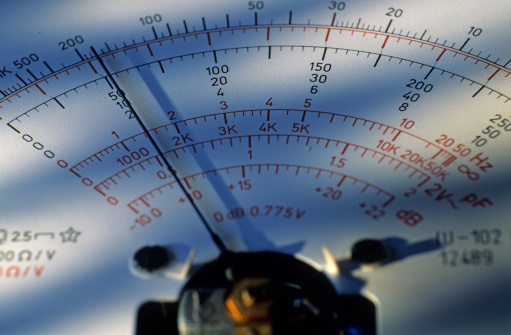Difference Between Voltmeter and Ammeter

When you are dealing with electricity or an electric circuit, two of the most common instruments that you will find yourself using are the ammeter and voltmeter. Both the instruments are used for measurement, but what they measure and how they measure it is quite different and thus sets them apart.
It is important to know the difference between the two instruments so that they can be used properly and effectively. Voltmeter and ammeter are something that is used by students, engineers, scientist, physicists and even technicians in various situations.
The primary purpose of an ammeter is to measure the electricity that is flowing through a circuit, whereas the voltmeter measures the potential difference between two points in a circuit.
As mentioned before, ammeter and voltmeter do not just measure different things, they function in a different manner as well. An ammeter needs to be connected is series to the component in the circuit that one wants to measure, so that one gets an accurate reading on the amount of current that is flowing through that device. Voltmeter, however, is connected to the circuit in a different way. Instead of getting connected in series, it is connected in parallel to the two points for which you want to measure the potential difference.
Since the two measuring instruments are connected to the circuit in a different way, there is no doubt that they function in a different manner as well. An ammeter is connected in series to the component for which the current flow is to be measured and in order to get an accurate reading, it is imperative to have keep the internal resistance of the ammeter low. If the internal resistance is not kept low, it will not allow the current to flow through smoothly and thus show a lower reading. In the case of voltmeter, however, the exact opposite is true. Due to the high resistance of a voltmeter, only a small amount of current is allowed to pass through it, which results in a more accurate reading of the potential difference between two points.
It is far more convenient to insert a voltmeter in a circuit than an ammeter. While a voltmeter can be connected to the circuit even when the current is flowing through it, the circuit needs to be disconnected before an ammeter can be inserted in it.
Instructions
-
1
Ammeter
An ammeter is a measuring instrument that is connected in series with an electrical element in a current circuit to measure the current that is flowing through the electrical element. Ammeters typically have zero to very little resistance. Contactless ammeters have become available, which allow current flow to be measured through the Hall Effect.
-
2
Voltmeter
Voltmeter is a measuring instrument that is connected parallel to any two points in a circuit in order to determine the potential difference between them. Voltmeters typically have a very high resistance.

